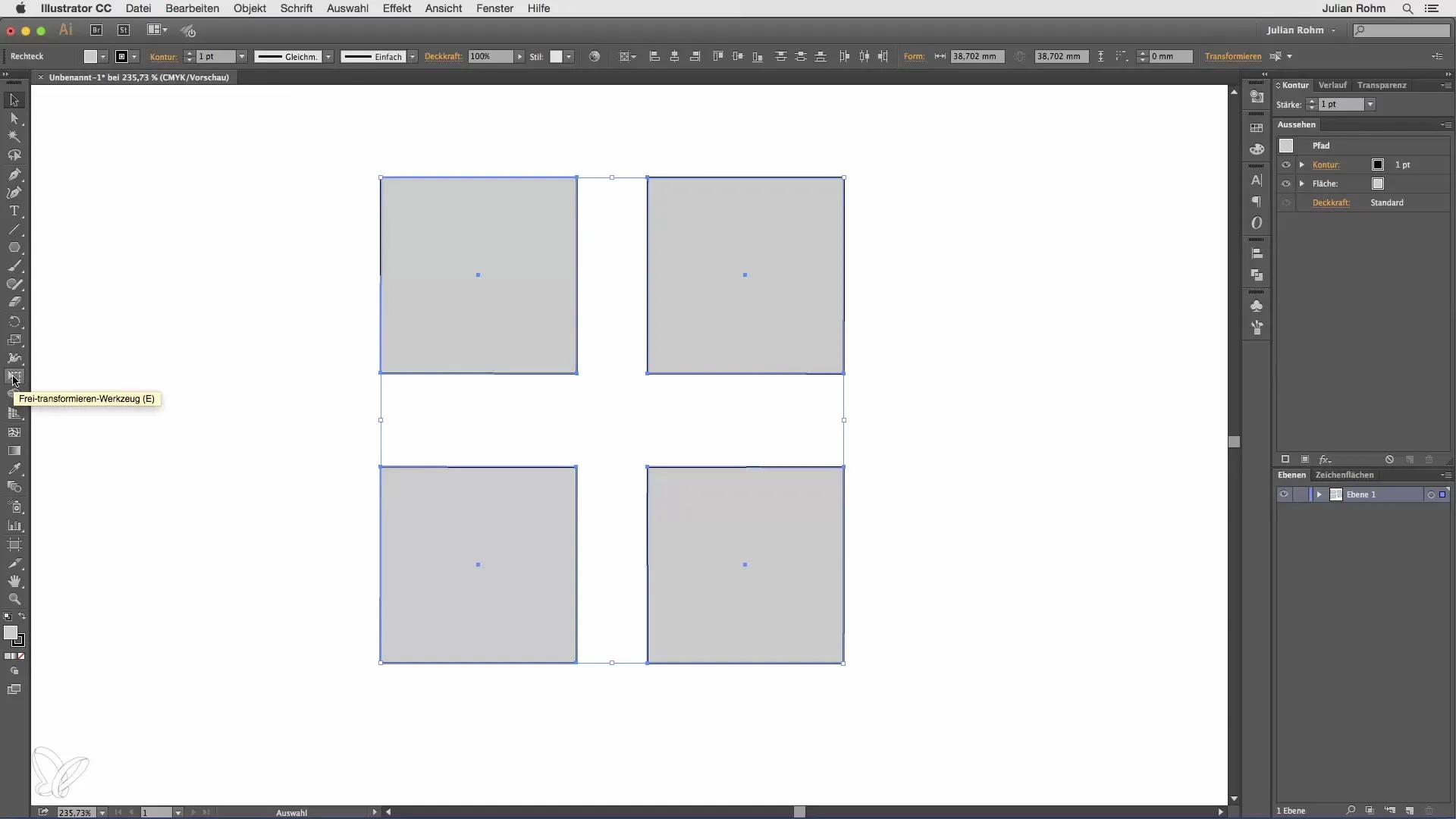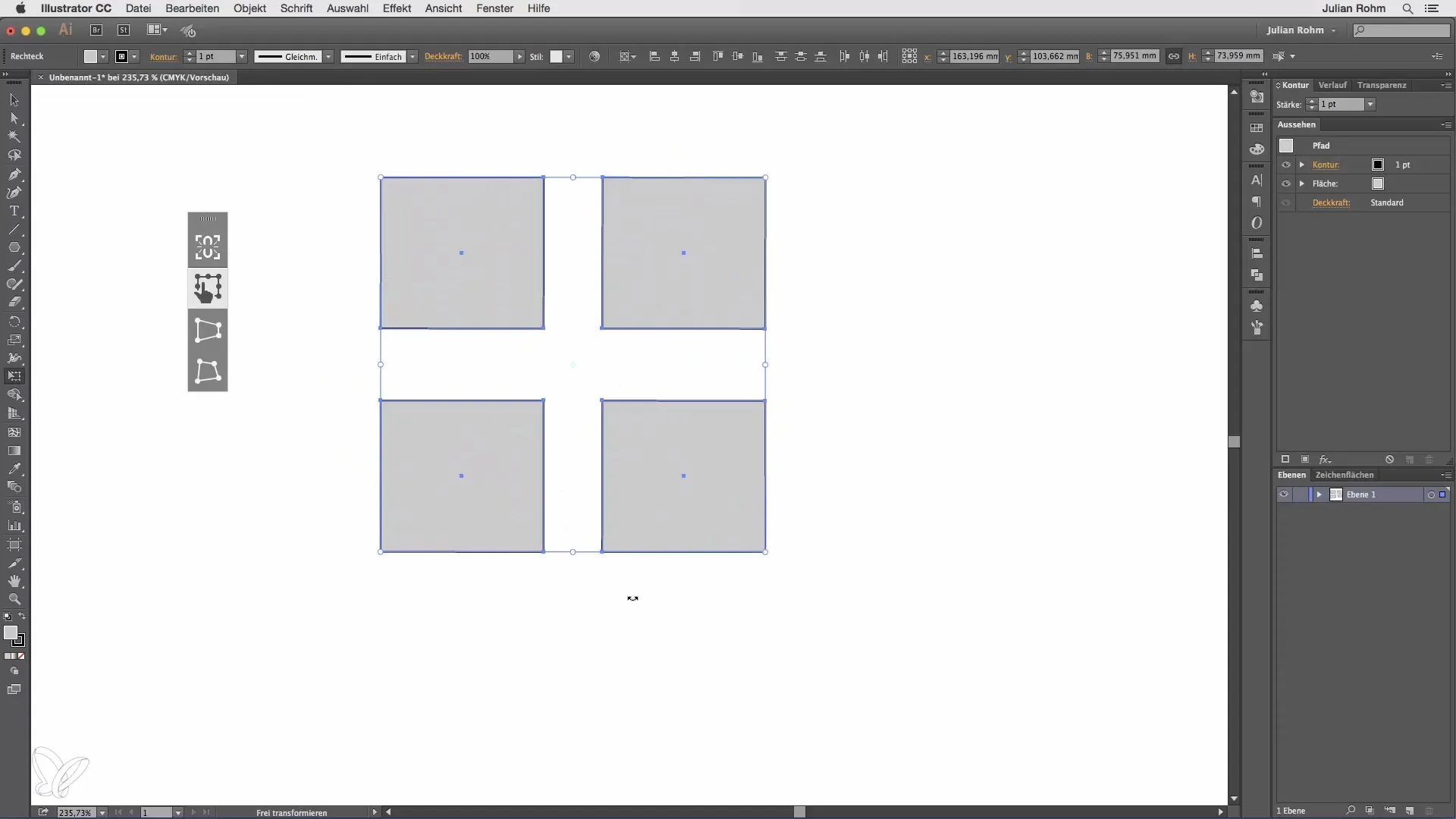The Free-transform-tool in Adobe Illustrator is a powerful tool for graphic designers and illustrators. It allows you to not only scale and rotate objects but also to distort them freely and transform them perspectively. In this text, you will learn step by step how to make optimal use of this tool to make your designs even more creative and appealing.
Key Insights
- The Free-transform tool allows for scaling, rotating, and distorting objects.
- By combining different keys, you can effectively perform various types of transformations.
- Alternatively to shortcuts, you can also use the toolbox to adjust your settings.
Step-by-Step Guide
Start by selecting the Free-transform tool from the toolbar. Once you select the tool, a floating palette will appear, which can be moved to any spot on your workspace. This provides you the flexibility to place the palette in a location that suits you best.

In the palette overview, you can see different variants of the Free-transform tool. At the top is the standard tool, followed by the perspective variant and the free distortion tool. For the first steps, focus on the standard tool.
With the standard Free-transform tool, you can pull handles (corner points) on the objects to scale them. If you hold down the Shift key while doing this, the object will be scaled proportionally. This is particularly useful when you want to maintain the proportions of your graphic.
Another important feature of the Free-transform tool is the rotation of objects. Simply hold the handle and drag to rotate the object. This function is also usable with the selection tool, but offers additional options with the Free-transform tool.

A difference between the Free-transform tool and the selection tool lies in the ability to distort objects more freely. To do this, hold down the Command or Control key while dragging a handle. This allows you to achieve an organic distortion of the object.
Do you want to customize your object even further? Hold down the Alt key while continuing to drag. This allows you to distort in both directions and achieve, for example, a parallelogram effect. This function gives you greater creative freedom in your design.
Combining the Shift, Command (or Control), and Alt keys opens up the possibility for perspective distortion. You can distort either in one direction or the other, enabling you to quickly design realistic perspectives.
If you are not familiar with the shortcuts or cannot remember them, there is also a simple alternative. In the palette, you can simply click on "perspective distort" to achieve the same effect as with Command, Alt, and Shift.
You can also select the corresponding tool in the palette for a regular distortion and achieve a similar result as when holding down the Command key. This gives you flexibility, depending on your preferences for workflow.
Summary - Making Optimal Use of the Free-transform Tool in Adobe Illustrator
Using the Free-transform tool in Adobe Illustrator can greatly enrich your design. With knowledge of the various transformation options that this feature offers, you can fully unleash your creativity and make your designs more efficient.
Frequently Asked Questions
How do I activate the Free-transform tool?You can select the Free-transform tool in the toolbar.
What distinguishes the Free-transform tool from the selection tool?The Free-transform tool allows for additional distortion and perspective transformation.
How can I scale objects proportionally?Hold down the Shift key while pulling the handles.
Which keys can I combine for perspective distortion?Hold Shift, Command (or Control), and Alt simultaneously.
Can I use the toolbox without shortcuts?Yes, you can simply select the desired option in the palette.


